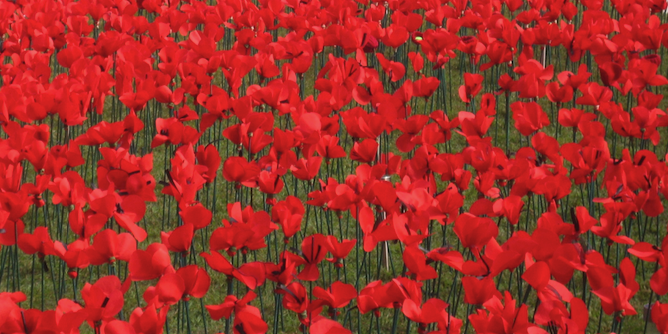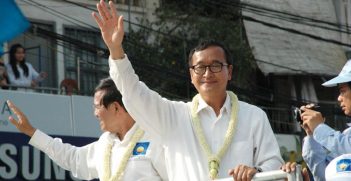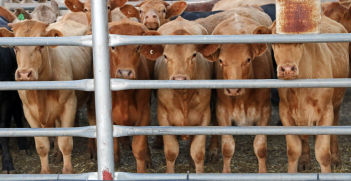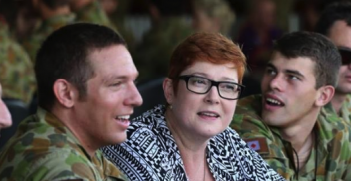ANZAC Day: Commemoration and Reflection

While 101 years have passed since ANZAC troops landed in Gallipoli, Anzac Day continues to be recognised as a significant aspect of the Australian story.
Lieutenant Colonel George Matheson, Second Australian Imperial Force (2nd AIF), was killed in action at Princess Augusta Bay, Bougainville, on 30 January 1944 while seconded to the US Army.
When the Governor of Fiji and High Commissioner for the Western Pacific, Major General Sir Philip Mitchell MC, was told of his death he recorded in his diary:
“… poor Matheson has been killed in action. Such a man, so intrepid and full of fight, had to be killed I suppose. But it is a very sad loss. DCM and MC in France last war, before he was 16, decorated by US in this he has been an inspiration to the 37th [Infantry Division, Ohio National Guard] and Americal Division and to all who knew him.”
Major General John Hodge, Commanding General of the Americal Division, still heavily engaged in battle on Bougainville, wrote to Matheson’s wife:
“Matty joined the Americal Division before it went to its first combat at Guadalcanal and, except for a short absence, served with the division since that time. He was known, loved and respected by every man and officer from the division commander to the last joined recruit … I feel entirely truthful in saying that Matty’s loss to the division is felt more generally and deeply than that of any other individual could have been.
He was completely a man’s man; brave without being foolhardy, and without any question one of the finest of nature’s noblemen that I have ever met. He fitted perfectly into all situations and all conditions from the most formal official function to the most savage fighting against our arch enemy, the Japs. For his splendid action at Guadalcanal he was awarded the Distinguished Service Cross …
… Personally, I felt his loss more than that of any fellow officer in my entire service in two wars. I enjoyed his companionship, his splendid spirit, his fine sense of humor and high morale more than I have words to express. You may know without question that Matty’s spirit will continue to live in this division so long as it remains an organized unit …”
Matheson’s story encompasses personal tragedy, our national story, and the policy and strategic complexities of war. He was born in NZ in 1904, made money gold mining in New Guinea in the 1920s and travelled to England and Japan and places in between. He came to Australia in 1931, married but had no issue and worked in the mining industry in Queensland, Western Australia, Malaya and Africa, ending up as a mine manager and government inspector of mines in WA. He was a natural leader and master of the technology of his day.
He enlisted as a private soldier in the AIF in April 1941 and by December he was a major commanding the 330-man Commando sent to New Caledonia as part of the outpost line placed across Australia’s north after Japan entered the war. When the US decided to secure the southern island route to the Philippines via Tonga, Fiji, New Caledonia and Australia, Matheson’s men played a major role in training the raw recruits of what became the Americal. When the Commando came home Matheson was seconded to them. He accompanied them to Guadalcanal, one of the epic battles of WWII, and went with them to rest and reconstitute in Fiji. There the British Governor employed him as the inspector general of the defences of Fiji before he shipped out to Bougainville where he was killed.
Although Matheson claimed to have fought with the NZ mining company in WWI, rising to the rank of second lieutenant and winning the military medal and military cross on the way, no evidence has been found to confirm that he ever served in WWI. It seems that he invented the persona in the mining camps in New Guinea as a young man and being in the mining industry could never escape the tales he spun. As a mature adult he was obviously the genuine article. Who knows how this weighed on his mind over the years, or whether it contributed to his death. Nonetheless, it is clear that he deserves his place in history.
In a broader sense, Matheson was at the cutting edge of the switch in Australian foreign and defence policy after the attack on Pearl Harbour. He was in Noumea during the delicate negotiations with the French colonial authorities; he greeted and worked with US forces when they arrived. He assisted with the training and preparation of the newly created Fiji Military Forces and died in Bougainville where Australian forces would eventually relieve the Americans as they marched north.
Anzac Day is a time to commemorate the death and destruction of war and the grief inflicted on the families left behind, and those who suffer from its physical and mental scars. Anzac Day has become more social as the grief of the world wars has faded, but even though fewer casualties were suffered in more recent wars we should not allow their sacrifice and service to be subsumed in the colour and historic origins of the day.
It is appropriate to reflect on what these people died for, whether or not we believe in the causes for which the government mobilised them. Have we done enough to shape the environment in which we live to minimise the likelihood of future conflict? Do we know enough about the peoples of the region and their ambitions for the future? Do we understand the likely impact of burgeoning populations, the rapidly rising consumption of natural resources, technological change, and climate change on our national security?
Matheson’s life shows that our flaws can be outshone by our deeds. Like Matheson, Australia has its share of flaws but would he be impressed with our efforts to promote a prosperous, equitable and peaceful future for the country he died for?
Bob Lowry is a Vietnam veteran, student of Indonesia politics and the military. He is a member of the AIIA ACT Branch. This article is published under a Creative Commons Licence and may be republished with attribution.





